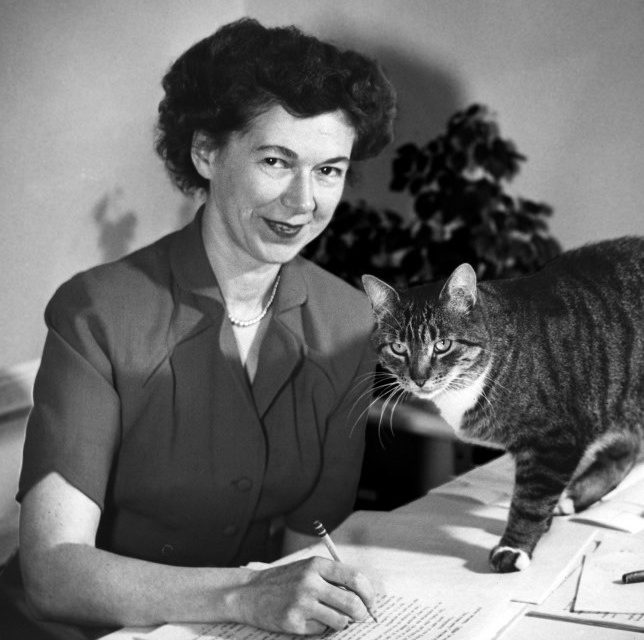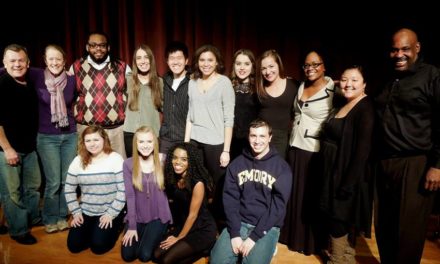On March 26, HarperCollins Publishers reported that author Beverly Cleary had passed away the day prior. My family members replied to my text about her passing within minutes, expressing their grief and surprise. My brothers and I grew up alongside her characters Henry, Beezus and Ramona, and we simply could not imagine that Cleary’s fictional world could come to an end. Her passing, however, gave us a chance to reminisce on how her literature touched each of our lives — even though we grew up in a very different time period and location than her own.
Cleary was born in 1916 in McMinnville, Oregon, where she discovered her passion for literature. She has 49 books to her name, primarily in children’s literature. Many of her works follow the Quimby family, including Ramona Quimby, her sister Beezus and her sister’s best friend, Henry Huggins. She is also well-known for her trilogy titled “Ralph S. Mouse.” Cleary was the recipient of many literary awards over the course of her career: she won two Newbery Honor Book awards for “Ramona and Her Father” and “Ramona Quimby, Age 8,” the National Book Award for “Ramona and Her Mother” and over 30 state-based awards. The Library of Congress bestowed her with the honor of “Living Legend” in 2000, and her “Ramona” series was adapted into the film “Ramona and Beezus” (2010) starring Joey King, Selena Gomez and Ginnifer Goodwin ten years later. Cleary’s works appealed to multiple generations of readers: “Ramona’s World,” the final book in the Ramona series, was published 44 years after the first book, “Beezus and Ramona.” Her books embody a timelessness that allows readers of any generation to relate to them, even if they were published decades earlier.
Cleary’s novels transcended space as well as time as they leapt the 5000-mile distance between the west coast and my childhood row house home in the Netherlands. When I read Cleary’s books as an elementary school kid, Cleary’s fictional world was as vibrant and realistic as my own; I didn’t even notice that her novels had been written well before I was born. I was a voracious reader who had the ambitious goal of tackling all the books in our family’s cherry-oak attic bookcase — including my parents’ pastel-covered, yellow-paged copies of Cleary’s “Ramona” series. Over the course of eight books, I followed a boisterous, quirky girl named Ramona as she learned to navigate life from kindergarten through fourth grade. As a shy teacher’s pet who wore matching dresses and hair ribbons to school and church alike, I could not have been a more different child than Ramona Quimby.

Beverly Cleary in 1955. (Cleary Family archive/OPB)
All the same, Cleary’s series contained reflections of my own childhood. I hated when we had spinach meatloaf for dinner just like Ramona despised when her mother served her beef tongue, and we nearly lost our puppy, Skittles, just like Ramona lost her cat, Picky-Picky. Cleary’s novels were impactful because they refused to shy away from difficulties in familial relationships that real-life readers were experiencing. Throughout the series, Ramona deals with helplessness and confusion as her father struggles to find a job. She also constantly feels the need to compete against her older and younger sister for her parents’ attention. Even though I had a happy childhood, I was also a middle child whose family needed to pinch their pennies. Sometimes I wanted to run away like Ramona, but my family ultimately grew through challenges, just like the Quimbys.
Cleary’s novels likewise made their mark on the lives of my friends and family in their own ways. My older brother read the books, and our family watched “Ramona and Beezus” in our living room. My sister-in-law grew up visiting the Beverly Cleary Sculpture Garden in Portland, Oregon, and her mother read the same novels as a child 20 years earlier in southern California. My cousin also tore through the books and remembers being jealous of Ramona’s ability to climb the monkey bars. Cleary’s novels likewise accompanied my Emory friends throughout their childhoods, as many of my friends grew up reading or listening to the audiobooks with their parents. My close friend Beverley, for example, remembers that Ramona’s ability to laugh at her squeaky, new shoes encouraged her to take embarrassing situations less seriously. Cleary’s work acted as the invisible string that connected us, shaping us individually well before we met each other.
To many of us who grew up with memories of Ramona or Ralph, Cleary’s passing may feel like an unmooring of our childhood. All the same, the work of a beloved author still leaves fingerprints on our lives long after we grow up. My older brother just got his driver’s license after learning to drive in Cleary’s hometown of Yamhill. Saru, my arts and entertainment editor, remembers carrying bundles of Cleary’s books home from the library. As a twenty-year-old college student with more questions than answers about my future, I still long for Ramona’s spunk, determination and boundless confidence. We may not be eight years old anymore, but we may need Ramona Quimby more than ever.
Abby Williams (22C) is from Pennsylvania and the Netherlands, majoring in English literature. Outside of the Wheel, she writes for a book blog named Paperback Paris, serves at Bread Coffeehouse and writes for Emory in Via. She loves going on long walks during sunset, trying new baking recipes, drinking coffee with honey and cinnamon and cuddling with her Cavalier King Charles Spaniel, Skittles. Contact Williams at abby.williams@emory.edu.






